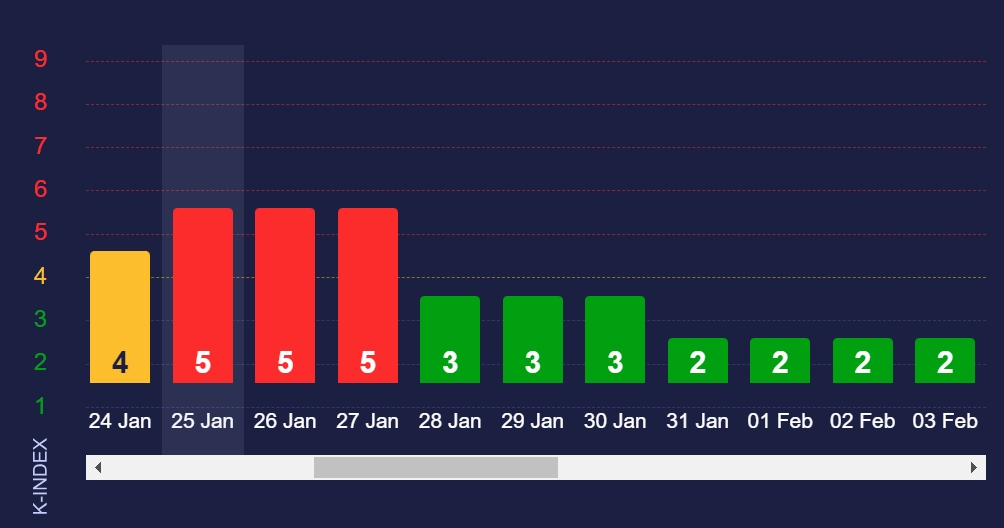Earth undergoing intense magnetic storm: Tips for protecting well-being on critical days
 A magnetic storm will hit the Earth today (Collage RBC-Ukraine)
A magnetic storm will hit the Earth today (Collage RBC-Ukraine)
A red-level magnetic storm began to affect the Earth on Thursday, January 25, in the second half of the day. It is expected to be prolonged and stormy for several more days. The storm is anticipated to reach a K-index of 5.
Meteoagent provides information about this magnetic storm and advises on how to preserve your health.
What is a magnetic storm?
Regularly, on the Sun, flares and explosions are leading to the ejection of a large amount of solar energy into space. It consists of charged particles - protons and electrons, which, with these ejections, scatter in different directions, including towards Earth.
Charged particles can move quickly in space, and when they reach Earth's magnetosphere, activity occurs, which scientists call magnetic or solar storms.
Magnetic storms are classified by their intensity with indices ranging from K-1 to K-9. All storms from K-index 1 to K-index 4 are considered small, while those above K-index 5 are classified as red-level storms. Red-level storms can affect human well-being and cause discomfort.
They disrupt the operation of communication sources such as cell towers, GPRS, satellites, and radio frequencies. Storms above K-index 7 can also lead to polar auroras.
What is known about the upcoming storm?
According to data from satellite systems NOAA, TESIS, and international meteorological laboratories worldwide, a red-level storm with a K-index of 5 hit Earth in the second half of the day on January 25. This storm is expected to remain active on Friday, January 26, and Saturday, January 27.
The magnetosphere will return to a calm state only on Sunday, January 28.

Magnetic storm on January 25-27 (screenshot)
How a magnetic storm affects people
There are numerous studies confirming a connection between magnetic storms and worsening well-being in many people worldwide. On such days, individuals often complain about health issues and seek medical attention.
Common complaints include:
- Headaches, migraines, dizziness
- Mental fogginess, daytime sleepiness
- Sleep problems at night
- Difficulty concentrating, general weakness, increased fatigue Increased anxiety, irritability, aggression
- Exacerbation of chronic illnesses
Astronauts face the greatest danger from magnetic storms as they are outside the protective shield of the Earth's atmosphere. Astronauts are at risk of exposure to high levels of radiation, significantly increasing the likelihood of cancer.
How to preserve your health
Medical professionals provide general recommendations to navigate days of magnetic storms without difficulties. It is essential to get enough sleep, maintain a balanced diet, and adhere to a normal daily routine. Additionally:
- Monitor your health
- Stay adequately hydrated
- Reduce emotional and physical stress
- Limit alcohol and tobacco consumption
- Take a contrast shower in the morning and do exercises
- Take walks outdoors during the day
- Ventilate rooms
- Try not to overexert yourself, engage in calm activities, choose gentle regimes, and get more rest
- If necessary, seek help from specialists.
Earlier, we wrote about how to lower high blood pressure without medication.
We also discussed the healing properties of certain foods.

